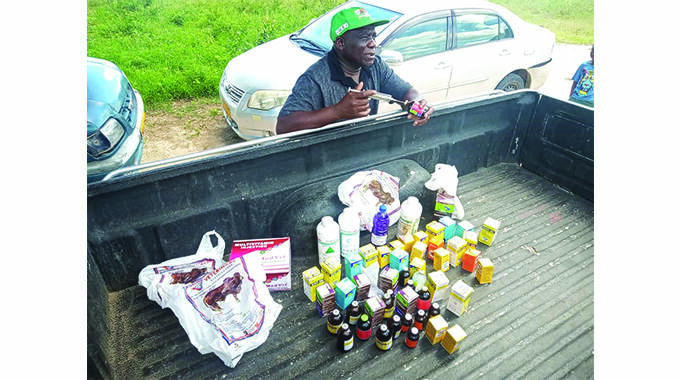January disease: A haunting in Insiza district

Peter Matika, Online Desk
The ghastly January disease that ‘devoured’ hundreds of cattle in Insiza Matabeleland North province has come back to haunt farmers and villagers, as there are new reports of cattle deaths from the distict.
Last month government implemented a mandatory quarantine on cattle movement, in an effort to prevent the disease from spreading and possibly contain it.
However, like a vengeful spirit, the disease has returned and has claimed the lives of more cattle, leaving villagers and farmers in more distress.

File picture: A farmer examines a cow that succumbed to January disease in Fort Rixon
“Even despite the mandatory quarantine, we are still losing cattle. The disease had gone docile since the implementation of the quarantine but has since returned and is quite vicious,” said Mr Nkani Khoza a farmer in the district.
Mr Khoza said to date he had lost 35 beasts to the disease, while other farmers and villagers had completely lost all their livestock.

Mr Nkani Khoza with some of the medication he bought to save his remaining cattle. Farmers have resorted to experiment with a variety of medicines to contain the disease
“I am among the few and when I say few, I mean a few fortunate farmers, who have been working strenuously to save and protect our livestock. I have lost thousands of dollars to buying medication and it is quite dire for those who cannot afford it,” said Mr Khoza.
He said they were living in a nightmare and were praying for the government’s intervention at the soonest possible time.

Mrs Thulani Mpofu shows some of the bells removed from her dead cattle. She lost 50 cows to the disease
“The next coming years are going to be difficult. There is no draught power for farmers to plough the fields. We will starve. Already as it is hunger has crept in. the biltong that was salvaged from some of the cattle that died is almost depleted,” said Mr Khoza.
He added opportunistic cattle buyers had left the district in shambles as they had infiltrated it and were buying cattle from desperate villagers and farmers for a song.

“It is the situation. There is nothing that can be done. It either you lose a little or lose entirely. Cattle were going for as little as between US$80 and US$100 when the district encountered the outbreak. For now, I have no idea and neither do I want to know because it is heart-wrenching,” said Mr Khoza.
Government has introduced a plethora of measures to fight the deadly disease including dip tank rehabilitation, production of local vaccines, dipping, and introduction of the Presidential Tick Grease Programme among others.
Following these measures, the country has witnessed a 50 percent reduction in the number of tick-borne diseases. The Presidential Tick Grease Programme seeks to curb tick-borne diseases, particularly theileriosis.
The programme is in line with the National Development Strategy 1 (NDS1), which is prioritising animal health and production through strengthening farmer knowledge, and skills in livestock production and health so as to enhance productivity.
In Zimbabwe, cattle are a common source of wealth and draught power, and Government estimates that about 90 percent of the country’s nearly 5,5 million cattle are owned by small-scale farmers.
Last year about 700 cattle succumbed to theileriosis while about 200 animals died from black leg in the province.

Fort Rixon farmers and villagers lose cattle
A majority of livestock farmers in Matabeleland South, particularly in communal areas, have adopted livestock farming as a commercial entity, a development that is set to boost the province’s herd and contribute to the growth of the national herd.
As part of efforts to grow the national herd, Government under the Second Republic, has put in place measures to boost the production of livestock in both communal and resettlement areas.

Fort Rixon farmers and villagers lose cattle
President Mnangagwa launched the Presidential Livestock Scheme as part of efforts to grow the livestock sub-sector. Under the scheme, farmers are receiving legume seeds, fertilisers and forage sorghum among other inputs.
Distribution of the inputs is set to boost the creation of forage banks for improved animal nutrition.
Under the Livestock Recovery Growth Plan (2020-25), Government has since identified diseases, as a barrier to livestock sector growth, which requires the nation to adopt intervention measures that position the sector to contribute effectively to economic development.

Mat South Vet Dr Mdlongwa
Dr Mdlongwa said theileriosis, which was usually recorded in Mashonaland provinces, Manicaland, Midlands and Masvingo, was recorded for the first time in the province last year with Insiza District being the only affected district.
“We normally see a spike of this disease in January. Last year we had it on a farm called Lancaster but, this year it has spread to a neighbouring village called PBS. As veterinary services, we have been conducting awareness campaigns educating people about the 5-5-4 dipping regime,” he said.











Comments